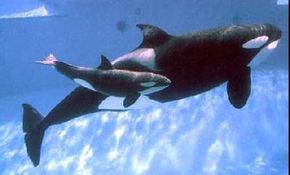Natural Selection
As you saw in the previous section, mutations are a random and constant process. As mutations occur,natural selectiondecides which mutations will live on and which ones will die out. If the mutation is harmful, the mutated organism has a much decreased chance of surviving and reproducing. If the mutation is beneficial, the mutated organism survives to reproduce, and the mutation gets passed on to its offspring. In this way, natural selection guides the evolutionary process to incorporate only the good mutations into the species, and expunge the bad mutations.
The book "Extinct Humans," by Ian Tattersall and Jeffrey Schwartz, puts it this way:
Advertisement
Let's look at an example of natural selection fromHow Whales Work.
The ancestors of whales lived on land -- there is evidence of the evolution of the whale from life on land to life in the sea (readHow Whales Workfor details), but how and why did this happen? The "why" is commonly attributed to the abundance of food in the sea. Basically, whales went where the food was. The "how" is a bit more perplexing: Whales are mammals, like humans are, and like humans, they lived and walked on solid ground, breathing air into their lungs. How did whales become sea creatures? One aspect of this evolution, according to Tom Harris, author ofHow Whales Work, is explained as follows:
Odd as it seems that the whale's "nose" actually changed positions, the theory of evolution explains this phenomenon as a long process that occurs over perhaps millions of years:
- Random mutationresulted in at least one whale whose genetic information placed its "nose" farther back on its head.
- The whales with this mutation were more suited to the sea environment (where the food was) than "normal" whales, so they thrived and reproduced, passing on this genetic mutation to their offspring:Natural selection“选择”这个特质是有利的。
- In successive generations, further mutations placed the nose farther back on the head because the whales with this mutation were more likely to reproduce and pass on their altered DNA. Eventually, the whale's nose reached the position we see today.
Natural selectionselects those genetic mutations that make the organism most suited to its environment and therefore more likely to survive and reproduce. In this way, animals of the same species who end up in different environments can evolve in completely different ways.



